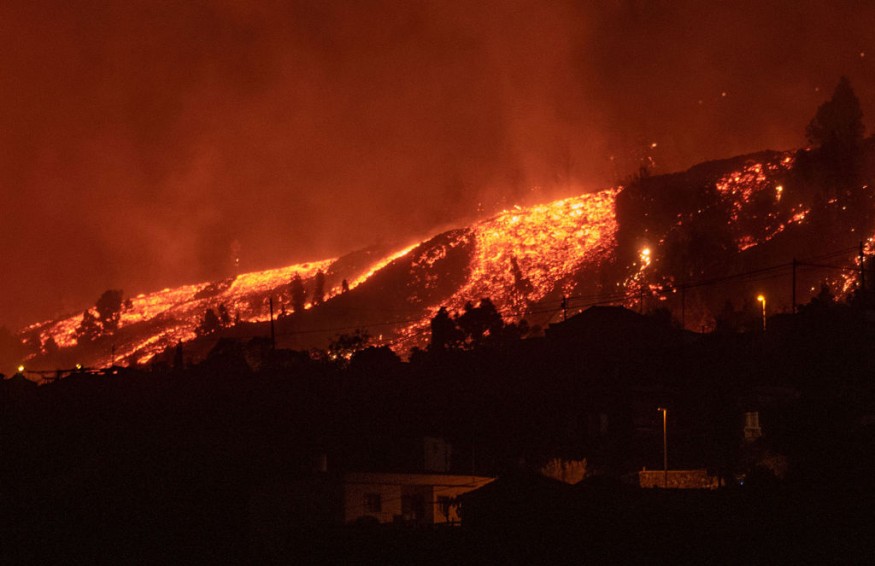After a week of seismic activity, a volcano on Spain's Atlantic Ocean Island of La Palma erupted on Sunday, forcing officials to evacuate hundreds as lava flows damaged isolated buildings and threatened to reach the coast. New explosions erupted throughout the night.
The volcanic footage coming out of La Palma in Spain's Canary Islands is just jaw dropping right now 🌋
— Scott Duncan (@ScottDuncanWX) September 19, 2021
Previous eruption was 1971 and 1949 before that.
🎥 Via @Armeteopic.twitter.com/N2kEGyMoB4
Eruption in La Palma

According to the Canary Islands Volcanology Institute, the initial eruption occurred just after 3 p.m. at the island's southern end, where it last erupted in 1971. Huge crimson plumes capped with black-and-white smoke erupted along the Cumbre Vieja volcanic ridge, which scientists had been keeping an eye on after molten lava accumulated beneath the surface after days of minor tremors.
The president of the Canary Islands, Victor Torres, claimed that 5,000 people had been evacuated from their houses by 11 p.m. Most had found relatives or friends to take them in, he added. The remainder had taken refuge in shelters.
La Palma is one of eight volcanic islands in Spain's Canary Islands archipelago off Africa's western coast, with 85,000 people. The islands are 100 kilometers (60 miles) from Morocco at their closest point.
Related Article : Alert Level 3 Raised After Volcanic Eruption in Southwestern Japan
Seismic Activity
Before the eruption, a 4.2-magnitude tremor was reported on the western slope of the ridge as it falls to the coast, at a region known as Cabeza de Vaca. As the eruptions progressed, at least two open mouths belched bright red lava into the air, which poured down the steep slope in narrow streams.
One black lava flow with a flaming tip moved toward residences in the hamlet of El Paso shortly after the initial explosion shook the region. Three hundred individuals in imminent danger were evacuated, roads were closed, and officials warned the curious not to approach the area, according to Mayor Sergio Rodrguez.
Total Damages
According to local officials, the lava damaged at least eight residences and caused one chalet with a tower to collapse. In addition, authorities have warned that the lava flows might harm El Paraiso, Alcalá, and the neighboring regions.
When Carlota Martín heard a big explosion, she was at an agricultural plot her family owns in Todoque, close downhill from the eruption site.
"When we first saw the column of smoke, we thought it couldn't be real," she told The Associated Press. "But it continued rising, and we realized we had to get out of there." "You walk away, but you keep an eye on the back of your head to watch what will happen. Nobody knows how the lava flows will fall, but our plot, as well as many other homes in the vicinity, may be in the path."
No Reports of Deaths or Major Injuries
According to Mariano Hernández, president of the island of La Palma, there were no early reports of deaths or injuries, but the lava flows worried him "about the inhabited regions on the shore."
"People should stay away from the eruption site where lava is flowing," Hernández said. "The evacuation is causing significant issues since the roads are clogged with people wanting to get near enough to watch it."
Although it is too early to say how long this eruption will persist, Itahiza Dominguez, chief of seismology at Spain's National Geology Institute, told Canary Islands Television that previous "eruptions on the Canary Islands lasted weeks or even months."
Previous Eruptions

On La Palma, the most recent eruption occurred 50 years ago and lasted little over three weeks. In 2011, the Canary Islands' most recent eruption happened underwater off the shore of El Hierro Island. It lasted a total of five months.
"The material looks to be quite fluid," said Vicente Soler of Spain's Higher Council, "and the lava flows will reach the sea sooner or later." According to the Volcano Risk Prevention Plan's scientific committee, a section of the island's southwest shore is at risk of landslides and rockfalls.
Prime Minister Pedro Sánchez of Spain canceled his trip to the United Nations General Assembly in New York to fly from Spain's mainland to the Canary Islands.
After meeting with local leaders on the island, Sánchez stated, "The inhabitants of La Palma should rest confident that we have all the resources and emergency personnel necessary."
Also Read : Satellite Images Show Europe's Most Active Volcano Mt. Etna as it Erupts for 50th Time This Year
For more news updates about what's happening to our environment, don't forget to follow Nature World News!
© 2025 NatureWorldNews.com All rights reserved. Do not reproduce without permission.





